Trying to book a tee time at the newly opened American Dunes earlier this year was a real lesson in just how much more popular golf, and in particular destination golf has become since the beginning of the covid pandemic. I had, of course, like every other golfer spent almost the previous year struggling to get tee times as I adjusted too slowly to the fact that now you need to know where you want to play and when well in advance. No more last minute Saturday morning bookings at your favorite course.
The plan was to arrange a booking for eight people because several of my golf buddy Bob’s friends had seen the extensive promotional material for American Dunes and wanted to come. It was early May. We were trying to book for the end of June, so this was 6-7 weeks out. All that I was able to get was a slot for two people on a Tuesday morning. This was just as well by me because it’s always irritating to plan for multiple people. And we were even able to get a second slot in the afternoon. So Bob and I made American Dunes the centerpiece of a short four course trip to southwestern Michigan (plus the Warren Course, Hawkshead, and the Ravines…don’t bother with the latter two).
Now American Dunes is different from your usual course because it was developed as a home and fundraiser for Folds for Honor, an organization that supports military veterans. This isn’t just some additional fact about the place, it’s its core. To enter the clubhouse from the parking lot, you walk through a concrete wall corridor with plaques that share stories of military men and women who died during our recent military conflicts. Everything here is infused with the military. At the beginning of the round, they give you a nickel and you’re supposed to throw it at the base of an air force memorial near the eighteenth tee, a tradition of some air force squadron. And all play on the course is supposed to stop for a minute of silence at 13:00 and a playing of taps, enforce by the golf carts shutting off. I thought that was a lovely idea…except that it didn’t happen.
Ok, that’s enough about the covid golf economy and the place itself. How about the golf course? It’s a new Jack Nicklaus design on the site of the old Grand Haven Golf Club. Grand Haven was supposed to be one of the better public courses in southwestern Michigan, but I never got a chance to play it. The new course follows mostly the same routing but is apparently very different in character. The old course was tree-lined and narrow. The new one is expansive and in the spirit of a lot of the destination courses built in the last 20 years, takes advantage of the sandy site, with extensive sandy waste areas. It was an excellent choice; the course looks good.
And the design elements? Also very good. This was a very ambitious project and they were clearly aiming to be one of the top public courses in Michigan. They have succeeded. There some drawbacks, most notably in the routing which has three ~125 yard walks between tees. But I thought that the design of the holes and the shaping throughout, including on and around the greens was excellent. It’s a bit more subdued than some of the other ‘New Nicklaus’ courses like nearby Harbor Shores (apparently; I haven't played it) or Old Corkscrew in Florida. But I think that that’s good. There’s plenty enough green-to-tee challenge. There’s no need for additional severity at the greens—although there are a few tricky ones.
Actually there’s one bad walk that I forgot about—to the first tee, which is probably ~300 yards. I think that I was the only person on the (full) course who was walking that day, so I just hopped on the back of Bob’s cart.
The first is a gentle handshake, a par 4 of about 350 yards. It’s not particularly generous off the tee, but you should probably only be hitting an iron anyway. The green is small and surrounded by mounds, which are there to hide the road that runs along the course. Don’t worry, you won’t see this kind of shaping around the green again.
The plan was to arrange a booking for eight people because several of my golf buddy Bob’s friends had seen the extensive promotional material for American Dunes and wanted to come. It was early May. We were trying to book for the end of June, so this was 6-7 weeks out. All that I was able to get was a slot for two people on a Tuesday morning. This was just as well by me because it’s always irritating to plan for multiple people. And we were even able to get a second slot in the afternoon. So Bob and I made American Dunes the centerpiece of a short four course trip to southwestern Michigan (plus the Warren Course, Hawkshead, and the Ravines…don’t bother with the latter two).
Now American Dunes is different from your usual course because it was developed as a home and fundraiser for Folds for Honor, an organization that supports military veterans. This isn’t just some additional fact about the place, it’s its core. To enter the clubhouse from the parking lot, you walk through a concrete wall corridor with plaques that share stories of military men and women who died during our recent military conflicts. Everything here is infused with the military. At the beginning of the round, they give you a nickel and you’re supposed to throw it at the base of an air force memorial near the eighteenth tee, a tradition of some air force squadron. And all play on the course is supposed to stop for a minute of silence at 13:00 and a playing of taps, enforce by the golf carts shutting off. I thought that was a lovely idea…except that it didn’t happen.
Ok, that’s enough about the covid golf economy and the place itself. How about the golf course? It’s a new Jack Nicklaus design on the site of the old Grand Haven Golf Club. Grand Haven was supposed to be one of the better public courses in southwestern Michigan, but I never got a chance to play it. The new course follows mostly the same routing but is apparently very different in character. The old course was tree-lined and narrow. The new one is expansive and in the spirit of a lot of the destination courses built in the last 20 years, takes advantage of the sandy site, with extensive sandy waste areas. It was an excellent choice; the course looks good.
And the design elements? Also very good. This was a very ambitious project and they were clearly aiming to be one of the top public courses in Michigan. They have succeeded. There some drawbacks, most notably in the routing which has three ~125 yard walks between tees. But I thought that the design of the holes and the shaping throughout, including on and around the greens was excellent. It’s a bit more subdued than some of the other ‘New Nicklaus’ courses like nearby Harbor Shores (apparently; I haven't played it) or Old Corkscrew in Florida. But I think that that’s good. There’s plenty enough green-to-tee challenge. There’s no need for additional severity at the greens—although there are a few tricky ones.
Actually there’s one bad walk that I forgot about—to the first tee, which is probably ~300 yards. I think that I was the only person on the (full) course who was walking that day, so I just hopped on the back of Bob’s cart.
The first is a gentle handshake, a par 4 of about 350 yards. It’s not particularly generous off the tee, but you should probably only be hitting an iron anyway. The green is small and surrounded by mounds, which are there to hide the road that runs along the course. Don’t worry, you won’t see this kind of shaping around the green again.
Two is a somewhat awkward par 5 of about 500 yards from the ~6,700 yard ‘Valor’ tees, but one that I liked. It bends to the right around a pond but you actually want to go down the middle because if you hit it long enough to reach the green in two, an oak tree ~80 yards short of the green blocks a shot from the right side. It’s about 290 to the edge of the pond and if you hit it this far, you should be good.
If you’ve hit a short drive, the oak tree can cause trouble for the second. The limbs are high enough that you can go under and there’s plenty of room short and left. I liked the tree—it keeps you honest on the layup. The green slopes front-to-back, which I liked.
If you’ve hit a short drive, the oak tree can cause trouble for the second. The limbs are high enough that you can go under and there’s plenty of room short and left. I liked the tree—it keeps you honest on the layup. The green slopes front-to-back, which I liked.
Three is a ~370 yard straightaway par 4 with a pond starting on the left at about 250. Definitely not my favorite hole but the small, subtle pushed-up green makes for a good challenge.
One of the clunky walks is up the hill to the short par 3 fourth. It’s probably ~100 yards on a direct line but that’s of course not what the cart path does. Like the 2nd at the Kingsley Club, I suspect that this hole is a bit polarizing. The green is deep but narrow, with deep bunkers at both sides. Over the green is death. But I didn’t mind this hole because if you miss the green a bit short, the pitch isn’t too hard. With new, very firm greens, you had to be careful but clearly the play here will be to hedge toward the front of the green.
I preferred this hole to Kingsley’s second because the bunkering is a bit less severe, but it’s also been awhile since I’ve been there.
I preferred this hole to Kingsley’s second because the bunkering is a bit less severe, but it’s also been awhile since I’ve been there.
There’s another walk back up the hill to the par 4 fifth but it’s worth it. Plus you can leave your bag next to the fourth green because you walk past it to get to the fairway.
This is probably the course’s signature hole and it’s one of the best par 4s in the state. It’s also pretty clear to see from the tee what’s going on; the green is online with the bunker that encroaches into the left side of the fairway. You can see that short and right of the green is a massive waste area hill…which means that if you bailout too far to the right, you’ll probably have a blind second shot. This is correct.
One more important feature is that even if you can’t carry the bunker on the left (maybe 240), there’s still a ledge in the fairway to its right that can feed the ball to the left where you’ll have a clearer approach. The green is big, undulating and again, slopes a bit back-to-front.
This is probably the course’s signature hole and it’s one of the best par 4s in the state. It’s also pretty clear to see from the tee what’s going on; the green is online with the bunker that encroaches into the left side of the fairway. You can see that short and right of the green is a massive waste area hill…which means that if you bailout too far to the right, you’ll probably have a blind second shot. This is correct.
One more important feature is that even if you can’t carry the bunker on the left (maybe 240), there’s still a ledge in the fairway to its right that can feed the ball to the left where you’ll have a clearer approach. The green is big, undulating and again, slopes a bit back-to-front.
Six is a 520 yard par 5 that narrows at about the 250 mark. Everything is pretty much right in front of you here…just hit it straight. The green has a pretty good false front, so don’t be short. But it also slopes away to the back-left so don’t be too long if the pin is in the front. Tough green.
After another ~100 yard walk through a neighborhood we reach number seven, a fine ~170 yard par 3. The green is much wider on the right than the left and won’t be too difficult if the pin is right. It’s also probably best to hedge over here if the pin is left.
Eight is ~400 yards but you don’t want to go anymore than about 250 because of the pond. It’s better if you challenge the bunker and place your drive up the left side because then you’ll be able to play down the angle of the green. It’s much shallower across the pond if you’re coming in from the right.
Nine is a bit shorter than eight, doglegging right with a pond short and left of the green on the approach. There’s an obvious aiming point off the tee—the massive American flag, which is ~275 from the valor tees. But what you really want to do is either go over the edge of the trees on the right or hit a fade around them. There’s more room over there than you think and you won’t have to carry the pond from there.
The back nine starts with another ~400 yard par 4. It’s straightaway and the drive is fairly simple, but it’s best to be up the left side of the fairway because the green angles front-left to back-right and narrows.
While to this point, American Dunes has been a very good course with a few standout holes, it becomes an excellent one through the middle of the back nine. This starts with number eleven, a terrific short par 4. The drive is uphill into a saddle and if you can get your drive within about 100 yards of the green, you’ll pick a few dozen more yards from a downslope. The left side of the fairway collects balls but the further left you go, the less room you have before the end of the fairway.
The green is large, but very undulating and you don’t want to be long.
The green is large, but very undulating and you don’t want to be long.
Twelve is another beautiful par 3, a bit of a reverse redan where you can use short grass short and left of the green to run the ball on. It’s an especially good idea to use this slope to get at back right pins.
In addition to being fine holes in their own right, the routing of this part of the course is particularly good, with just a few dozen feet of walking between each green and tee.
In addition to being fine holes in their own right, the routing of this part of the course is particularly good, with just a few dozen feet of walking between each green and tee.
At 680 yards from the tips, thirteen is about the longest par 5 that I’ve ever seen. The valor tees are still ~600 yards and there’s a lot of trouble on the way. The fairway starts huge, but there’s long grass and broken ground in the middle of the fairway ~260 out from the valor tees. This makes it a pretty tough driving hole.
The second is also tough because it narrows between bunkers and you need to get within about 125 yards to have a decent view of the green. Fortunately if you don’t get your first two shots far enough to have a clear view, it’s pretty easy to feed your ball onto the green from short and right because it has pretty good front-right to back-left slope. An excellent long par 5.
Another medium-short par 4 (~365 yards), fourteen is the toughest driving hole on the course. Fairway bunkers are staggered with those on the right at 200 and 220, the one on the left at about 250, and the waste bunker through the fairway ~280. It’s important to hit it at least 240 to get it up to the flat, which improves the visibility on the approach.
It’s a very tricky green, with a spine running horizontally across and the back of the green sloping away. As with several of the greens here, you need to have good control over your approaches because it’s easy to run through the back on these fall-away greens.
There are no visibility issues on the 200 yard downhill par 3 fifteenth. But there is a wildly undulating, biarritzesque green that’s about 65 yards deep. Another very good hole in a very strong stretch.
Perhaps the best hole of all in this superb back nine stretch is the long par 4 sixteenth, which would certainly make my list of the best par 4s in the state. The fairway is generous, but the drive is uphill and you’ll need to hit it about 270 from the valor tees to have a good view of the green.
The approach is one of the great ones that I’ve seen on a par 4. A waste bunker bisects the fairway and you’ll need to be able to carry your approach within 40 yards of the green to cross it. It also runs diagonally from short-left to long-right so a miss right will likely catch it. But you should hedge left here anyway because the fairway feeds balls toward the green.
The par 4 seventeenth looks more challenging off the tee than it is because there’s fairway over the bunker in front of the tee. But it does narrow on the left around 250 and you’ll want to hedge a bit right. I didn’t get a photo of the green but again, it slopes away at the back.
While the back nine is one of the best in Michigan, it closes with the weakest, least original hole on the course: a straightaway 500 yard par 5 through trees with a pond running up the right side of the green. Maybe they could remove some of the trees and rough up the ground on the right to make it a bit more visually appealing.
My first thought after my two rounds at American Dunes was that it’s probably the best public course in the state. That may have been a bit generous, but it's a defensible claim. More than half of the holes, 4-6 and 11-17 are excellent and a few of those are certainly among the state’s best. There are also some good holes among the rest, especially 2 and 7. There are a few too many water holes and eighteen is very weak, but hole-for-hole, it stacks up well. There a few ~120 yard green-to-tee walks, but most of the routing is tight. It compares favorably to all but the tightest routings (Belvedere, Forest Dunes, the Loop).
I also thought that the course had and outstanding set of green complexes. The New Nicklaus courses tend to be overdone on and around the greens; too small with too many severe edges and often severe internal contours. But none of those is true here. The shaping always works with the natural contours, which creates great variety in the green complexes. There’s a lot of short grass around these greens, but not many severe run-offs. The detailing work here is excellent. There’s a lot of interior contour, but it’s never excessive. I especially appreciated that several of the greens fall away to the back, fitting their sites. We’ve come a long way from the 90s when no matter how severe the downslope, the green would be built up to slope back-to-front…with mounds behind it.
So American Dunes might be the best public course in the state. Every one of them has its weaknesses. So does American Dunes, but I feel that even these are lesser than Arcadia Bluffs (unwalkable), Greywalls (a few horrible greens), the Loop (again, overdone greens), and Arcadia Bluffs South (feels like it was designed by a computer). Forest Dunes is probably the other least-weak public course in the state, but it has the awful tenth hole. And there are as many good holes here as on any of those. It doesn’t compare to Wisconsin’s best public courses but as I like to say, the best public course in Michigan would only be the fifth or sixth best there. It’ll probably be just as hard to get a good tee time in 2022 and they’ve jacked up the rates (from $150 to $185), but it’s definitely worth it to play American Dunes.
I also thought that the course had and outstanding set of green complexes. The New Nicklaus courses tend to be overdone on and around the greens; too small with too many severe edges and often severe internal contours. But none of those is true here. The shaping always works with the natural contours, which creates great variety in the green complexes. There’s a lot of short grass around these greens, but not many severe run-offs. The detailing work here is excellent. There’s a lot of interior contour, but it’s never excessive. I especially appreciated that several of the greens fall away to the back, fitting their sites. We’ve come a long way from the 90s when no matter how severe the downslope, the green would be built up to slope back-to-front…with mounds behind it.
So American Dunes might be the best public course in the state. Every one of them has its weaknesses. So does American Dunes, but I feel that even these are lesser than Arcadia Bluffs (unwalkable), Greywalls (a few horrible greens), the Loop (again, overdone greens), and Arcadia Bluffs South (feels like it was designed by a computer). Forest Dunes is probably the other least-weak public course in the state, but it has the awful tenth hole. And there are as many good holes here as on any of those. It doesn’t compare to Wisconsin’s best public courses but as I like to say, the best public course in Michigan would only be the fifth or sixth best there. It’ll probably be just as hard to get a good tee time in 2022 and they’ve jacked up the rates (from $150 to $185), but it’s definitely worth it to play American Dunes.



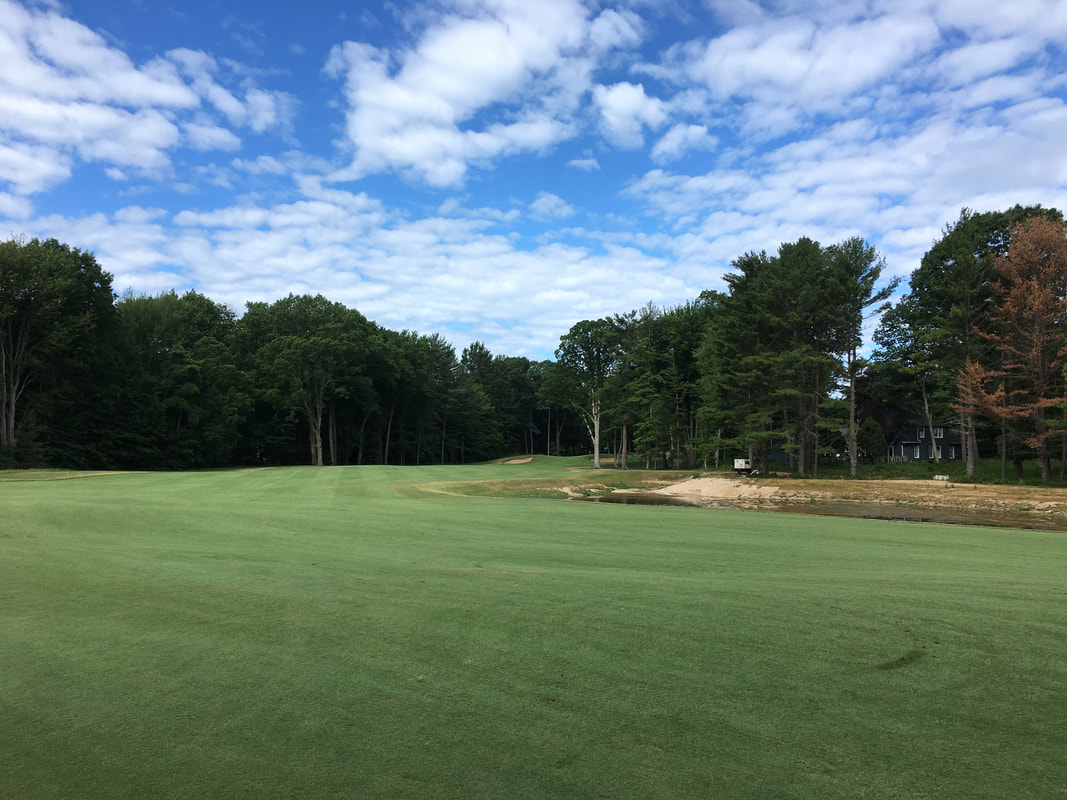







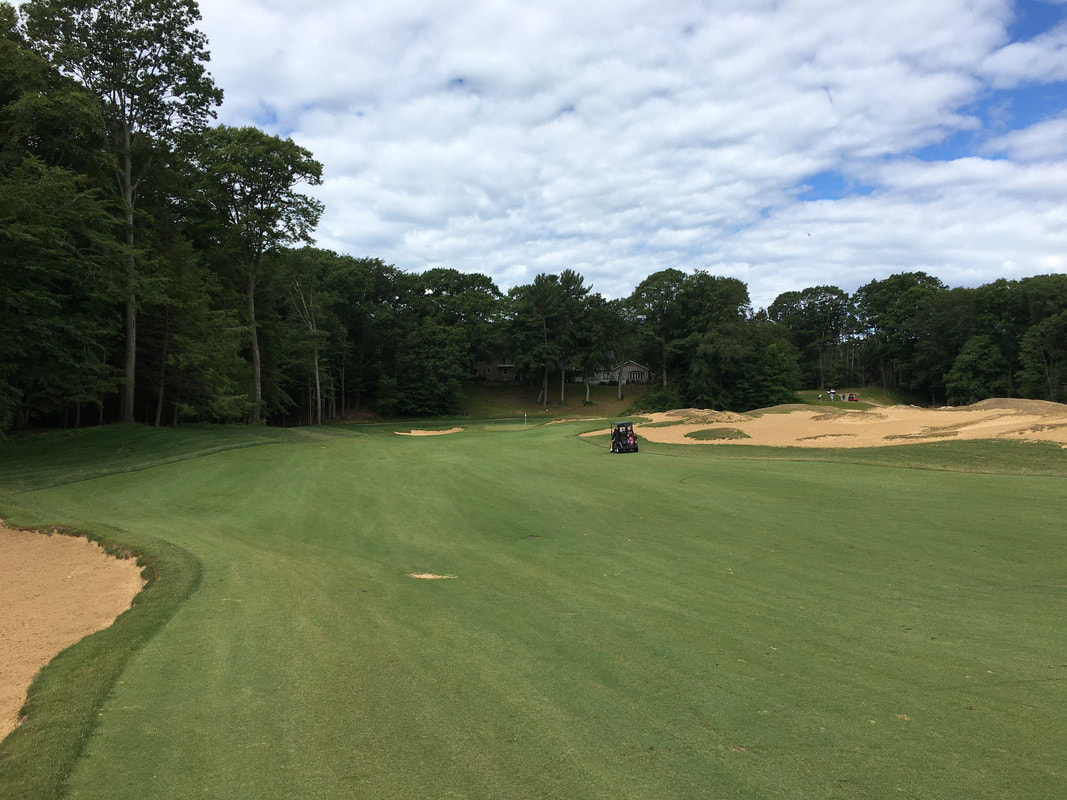
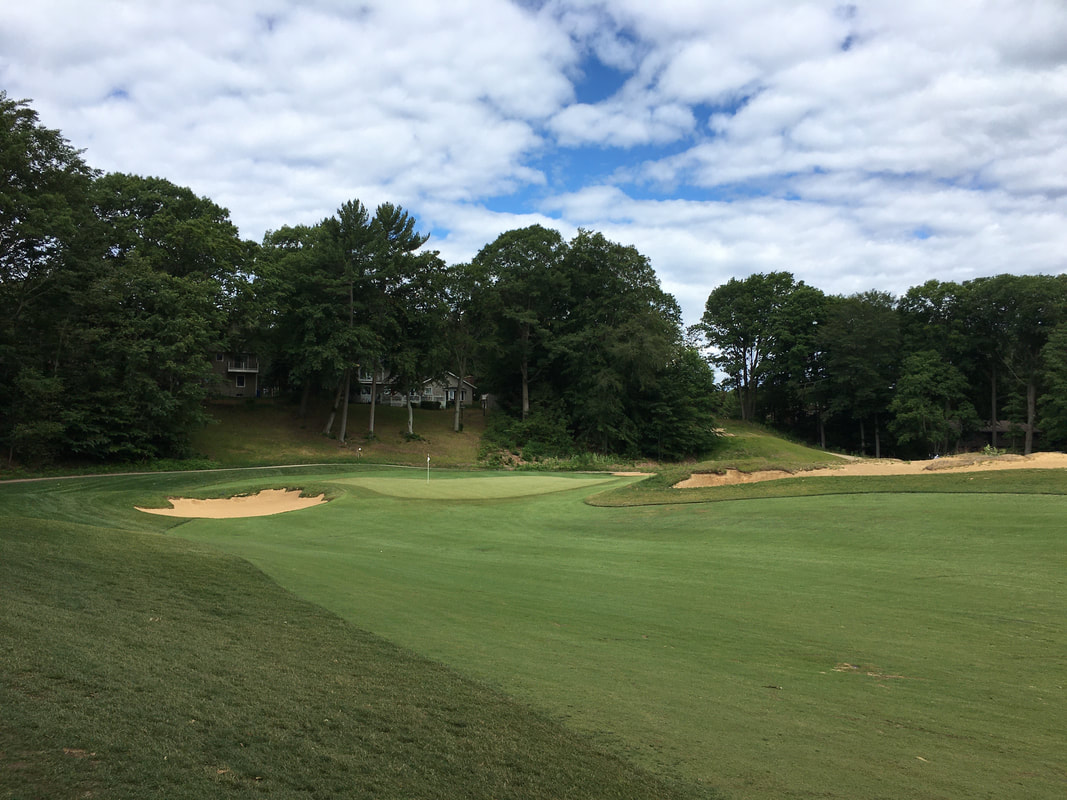









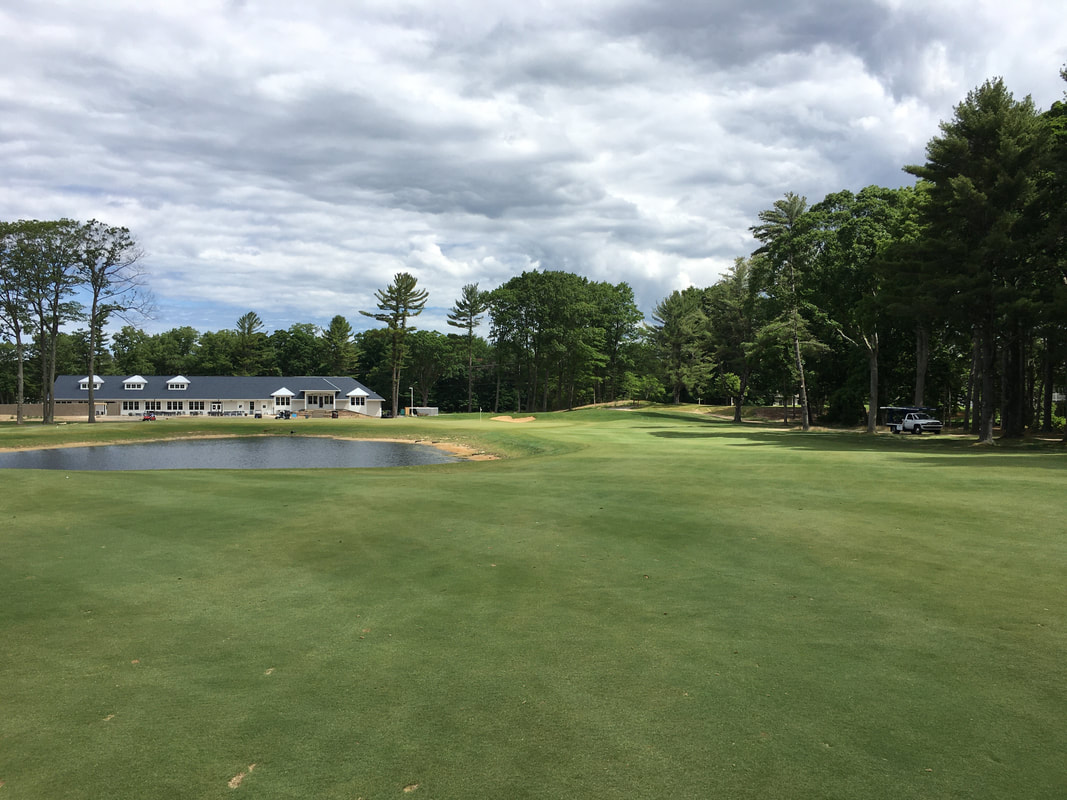

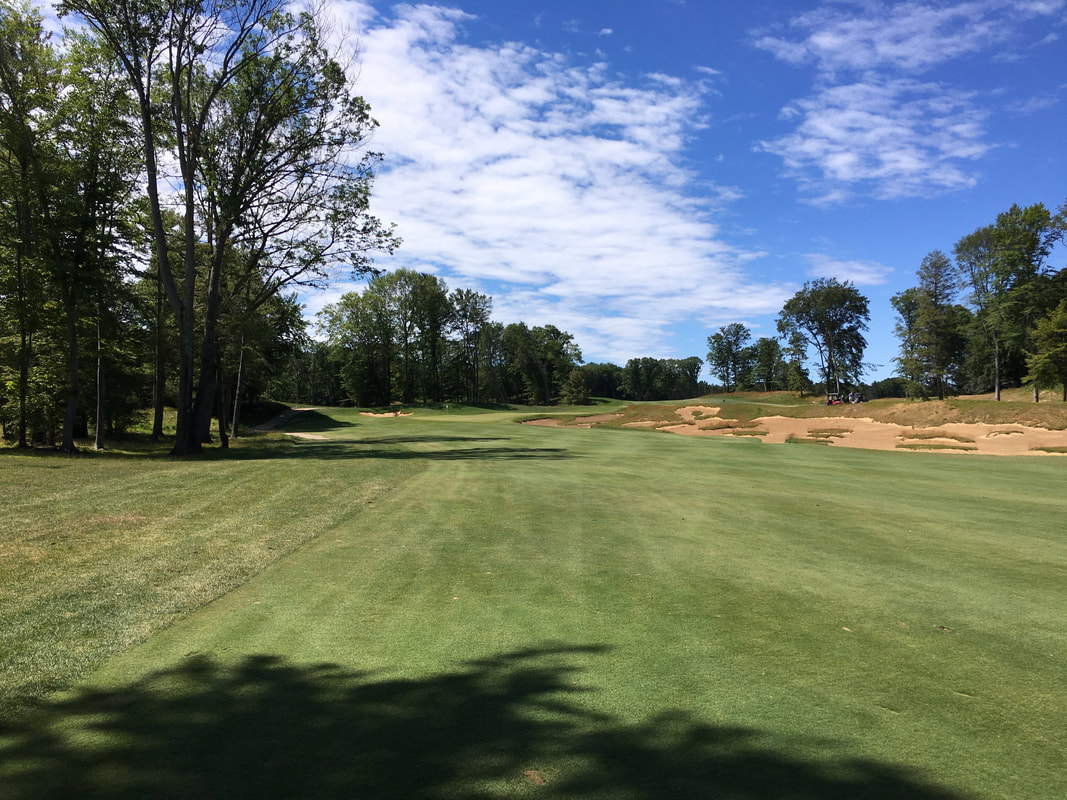



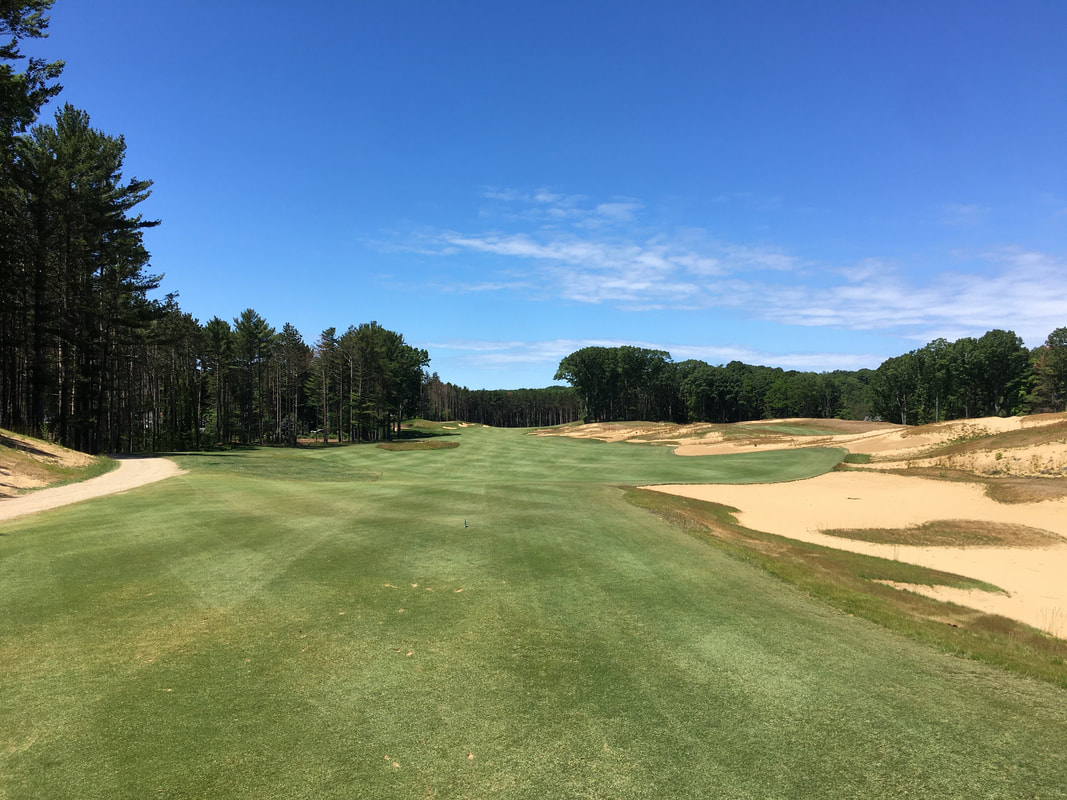













 RSS Feed
RSS Feed